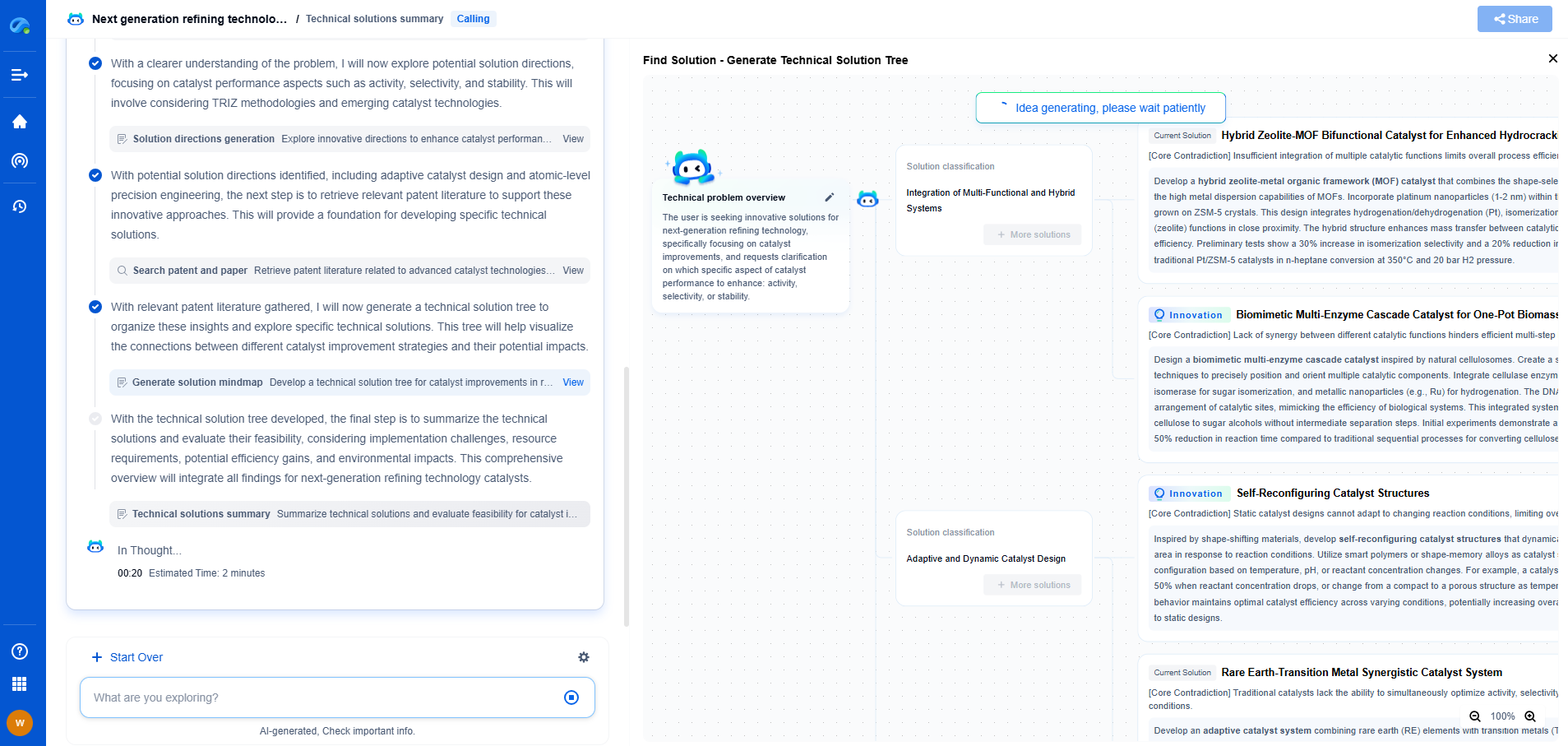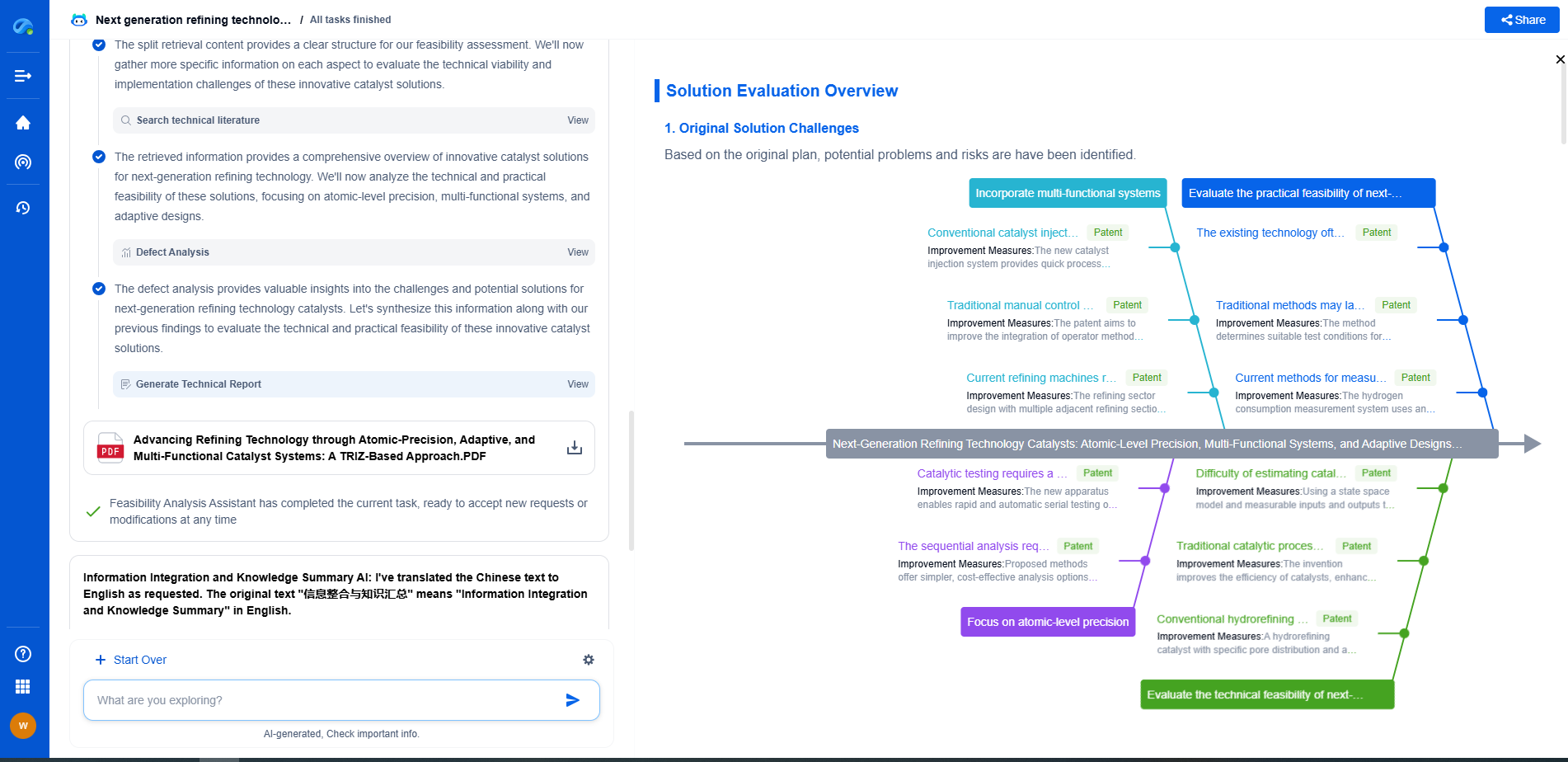Axle Configurations for Off-Road Vehicles: Solid vs Independent
JUL 2, 2025 |
When it comes to off-road vehicles, axle configurations play a crucial role in determining performance, handling, and overall capability. The two primary types of axle configurations are solid axles and independent axles. Each has its own set of advantages and drawbacks, particularly when navigating challenging terrains. Understanding these differences can help you make an informed decision about which configuration best suits your off-road adventures.
Solid Axles: The Traditional Powerhouse
Solid axles, also known as live axles, have been a staple in off-road vehicles for decades. They consist of a single, rigid beam connecting the wheels on each axle. This design offers several advantages that make it a popular choice for serious off-road enthusiasts.
One of the most significant benefits of solid axles is their durability. The rugged design is less prone to damage when crawling over rocks, logs, or other obstacles commonly found off the beaten path. Additionally, solid axles provide consistent ground clearance under the axle itself, which is crucial when navigating uneven terrain.
Another advantage is the improved traction offered by solid axles. They allow for better articulation, meaning the wheels can move independently to a certain degree, maintaining contact with the ground. This contact ensures power is effectively transmitted to the wheels, reducing the risk of getting stuck.
However, solid axles do have their drawbacks. The ride quality on paved roads can be less comfortable due to the rigid nature of the axle, which can result in a bumpy ride. Furthermore, the added weight of solid axles can impact fuel efficiency, making them less ideal for regular highway driving.
Independent Axles: Modern Flexibility
Independent axles, or independent suspension systems, are designed to allow each wheel to move independently of the others. This configuration is increasingly common in modern off-road vehicles, thanks to advancements in technology that have enhanced their performance.
The primary advantage of independent axles is the superior ride comfort they provide. By allowing each wheel to react independently to bumps and dips, independent suspension systems can offer a smoother ride on both paved and unpaved surfaces. This flexibility can be particularly beneficial for drivers who use their vehicles for both off-road adventures and daily commutes.
Independent axles also tend to provide better handling and stability, especially at higher speeds. The reduced unsprung weight can lead to improved cornering capability and overall vehicle stability, making it easier to control the vehicle on tricky trails.
However, independent axles may not offer the same level of durability as solid axles in extreme off-road conditions. They are generally more complex and can be more susceptible to damage when subjected to heavy loads or sharp impacts. Additionally, independent axles may not provide the same level of ground clearance as solid axles, which can be a limitation in more challenging terrains.
Choosing the Right Configuration for You
The decision between solid and independent axles depends largely on how you plan to use your off-road vehicle. If your primary focus is on extreme off-road excursions and you value durability and traction above all else, solid axles may be the better option. Their proven reliability and robust construction make them ideal for tackling the toughest terrains.
On the other hand, if you’re looking for a vehicle that offers a balance between off-road capability and on-road comfort, independent axles may be the better choice. They are well-suited for those who enjoy off-road adventures but also require a vehicle that can comfortably handle daily driving.
Conclusion
Ultimately, the choice between solid and independent axles is a matter of personal preference and intended use. By understanding the advantages and limitations of each configuration, you can make an informed decision that will enhance your off-road experience. Whether you prioritize rugged durability or versatile comfort, there’s an axle configuration that will meet your needs and keep you exploring new trails with confidence.
Boost Innovation in Gears & Transmissions with Patsnap Eureka
Whether you're designing a next-gen planetary gearbox or optimizing gear tooth profiles for noise reduction, keeping up with the fast-evolving landscape of mechanical transmissions requires more than just experience—it takes insight, speed, and smart tools.
Patsnap Eureka, our intelligent AI assistant built for R&D professionals in high-tech sectors, empowers you with real-time expert-level analysis, technology roadmap exploration, and strategic mapping of core patents—all within a seamless, user-friendly interface.
Whether you're streamlining a manual transmission system or exploring electromechanical actuation, Patsnap Eureka helps your team move from concept to novelty faster than ever.
👉 Experience Eureka in action—request a personalized demo today and see how AI can revolutionize your gear innovation workflows.
- R&D
- Intellectual Property
- Life Sciences
- Materials
- Tech Scout
- Unparalleled Data Quality
- Higher Quality Content
- 60% Fewer Hallucinations
Browse by: Latest US Patents, China's latest patents, Technical Efficacy Thesaurus, Application Domain, Technology Topic, Popular Technical Reports.
© 2025 PatSnap. All rights reserved.Legal|Privacy policy|Modern Slavery Act Transparency Statement|Sitemap|About US| Contact US: help@patsnap.com

